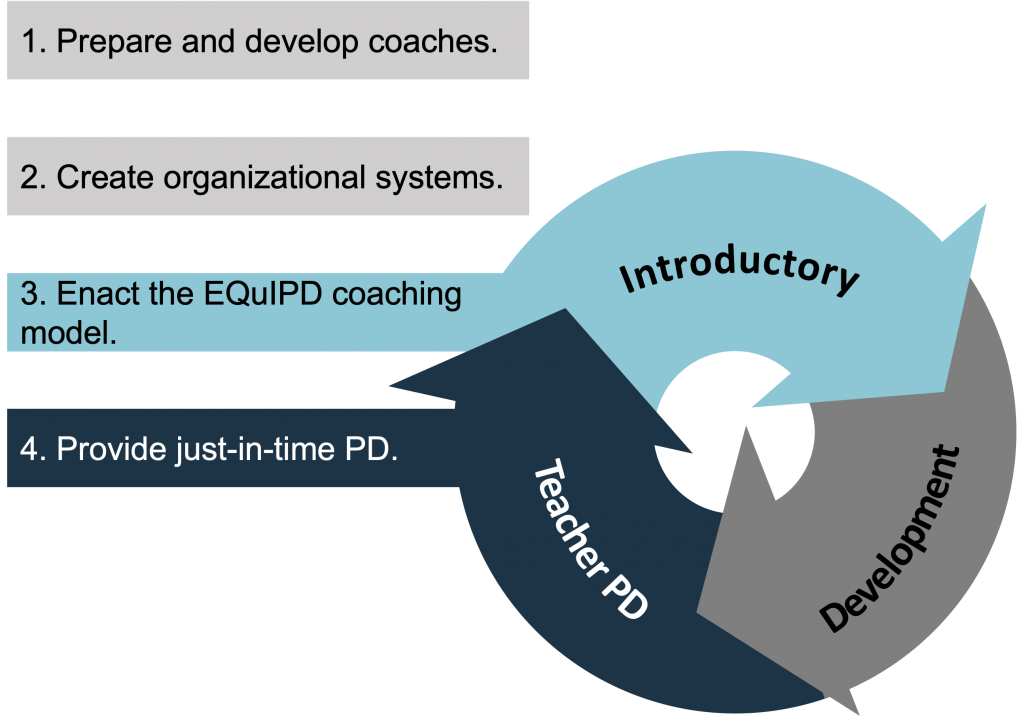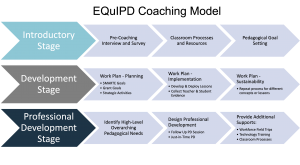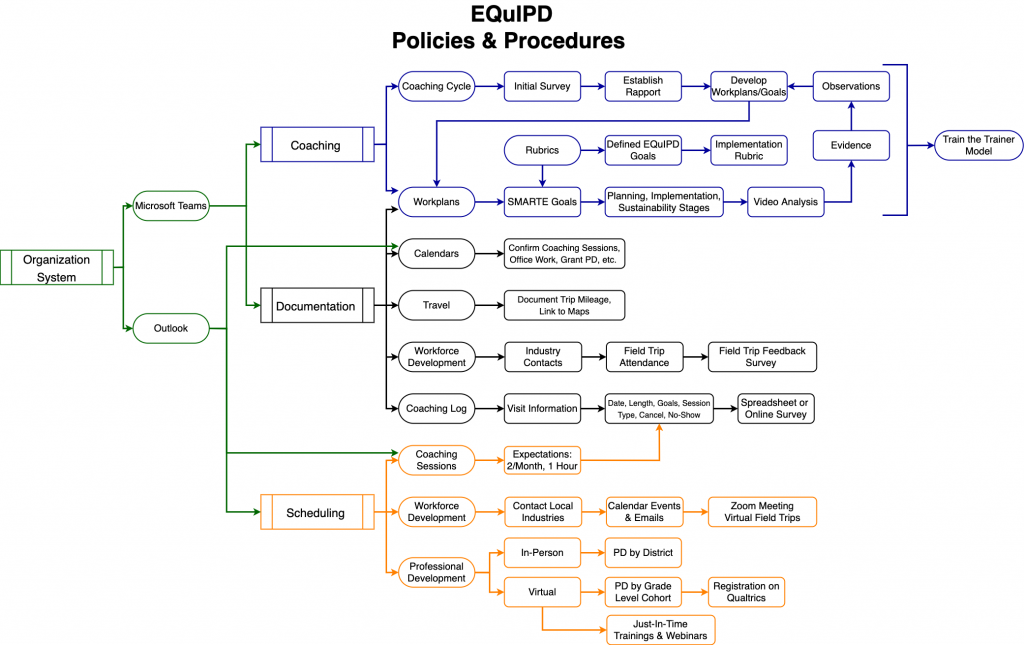At the core of our coaches’ practice lies our coaching model which outlines the various facets of the roles, responsibilities, and guiding statements that inspire our coaches. The facilitative coaching framework outlines the goals and areas of emphasis in the coaching practice. Systematic documentation of all relevant progress helps us stay organized and keep track of the various goals our teachers are working towards.
EQuIPD Facilitative Coaching Model
Coach development
Professional development for coaches is just as essential as professional development for the teachers that they serve. We have created a coach development model that provides an overview of how we developed our coaching systems. We begin with developing coaches in regards to content, pedagogical practices, and coaching practices. As we develop coaches we create the organizational systems and structures needed to provide and document coaching with teachers. We then move into the EQuIPD coaching model that contains 3 stages: introductory, development, and teacher professional development. This coaching cycle allows for teachers and coaches to collaborate to identify concepts and skills that need support through just-in-time professional development.
What coaches do
Facilitative coaching is a continuous, ongoing process for the teacher as well as the coach. Thus, coaches and teachers work as a team towards their goals. All their activities are documented in the form of coaching work plans, which provide a way to measure progress and accountability. Another activity that our coaches and teachers learn a lot from is video analysis, wherein coaches and teachers analyze videos to learn best practices (as well as non-examples). Planning field trips for teachers which play an important role in bridging the potential gap between the workplace and the classroom is another important part of our coaches’ specialization. Apart from planning professional development sessions, our coaches also regularly hone their writing skills via broad scope writing, i.e., articles for newsletters and blogs, and peer-reviewed journal articles.
Documentation
Detailed coaching work plans are developed between coaches and teachers. The work plans are maintained using OneNote so both the teacher and coach have access to the document. These are used to enable collaboration between teachers and their coaches, and documentation of their progress towards these goals. Another important document is the implementation rubric, which clearly specifies the grant goals and our modus operandi to achieve them. The implementation rubric also lays down what is important to us and how we work to achieve our goals.
Systems
Our coaches use Microsoft TEAMS to a) communicate with leadership stakeholders as well as other coaches, b) communicate with all the teachers in the program, and also, c) store all coaching materials. This forms the back-end of our collaboration and communication practices.



